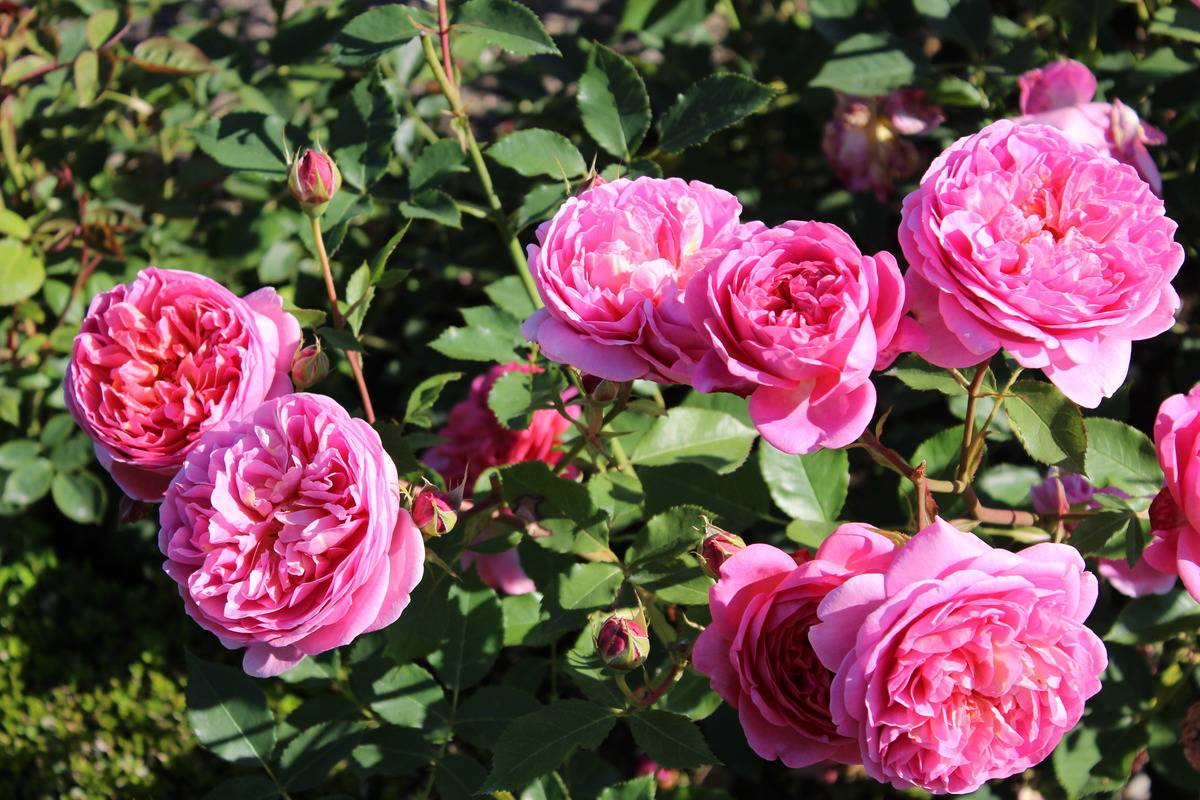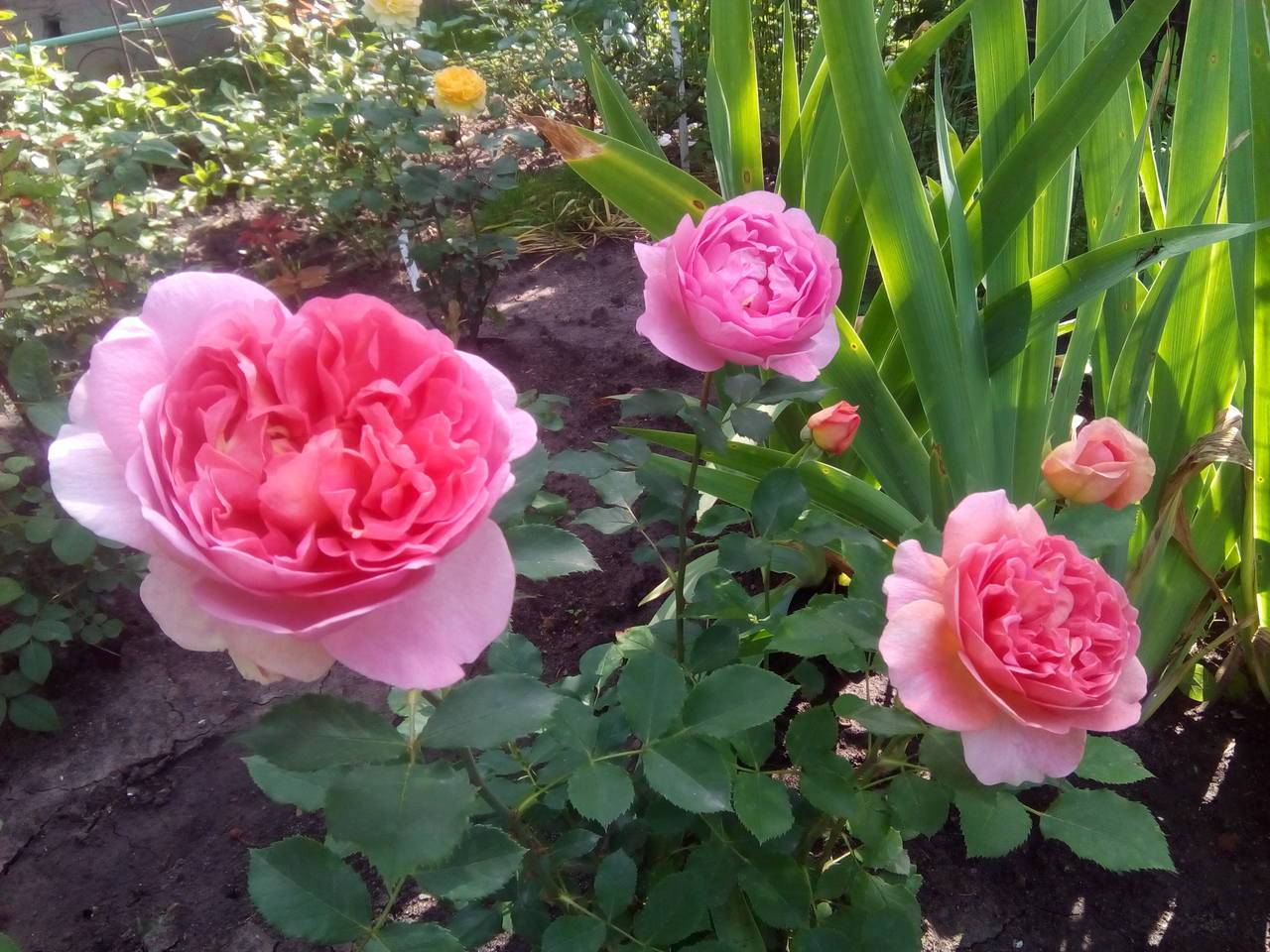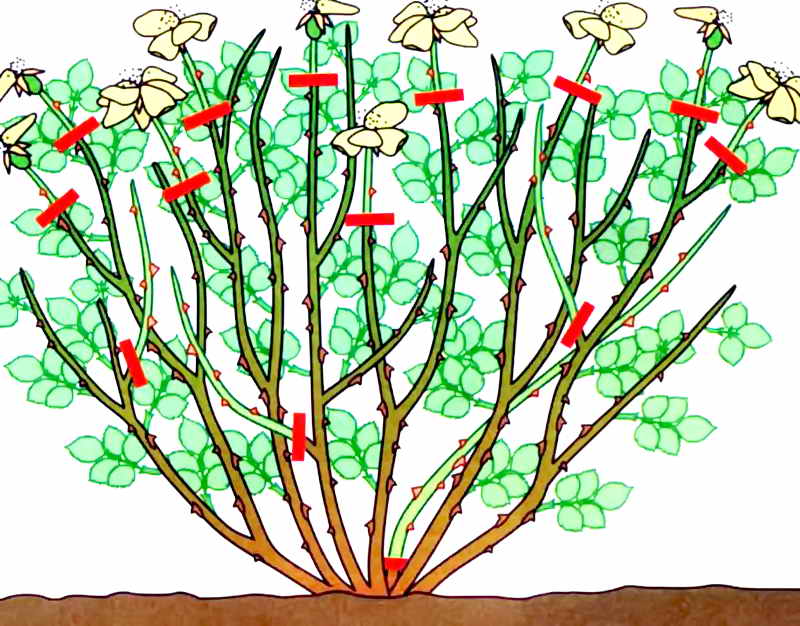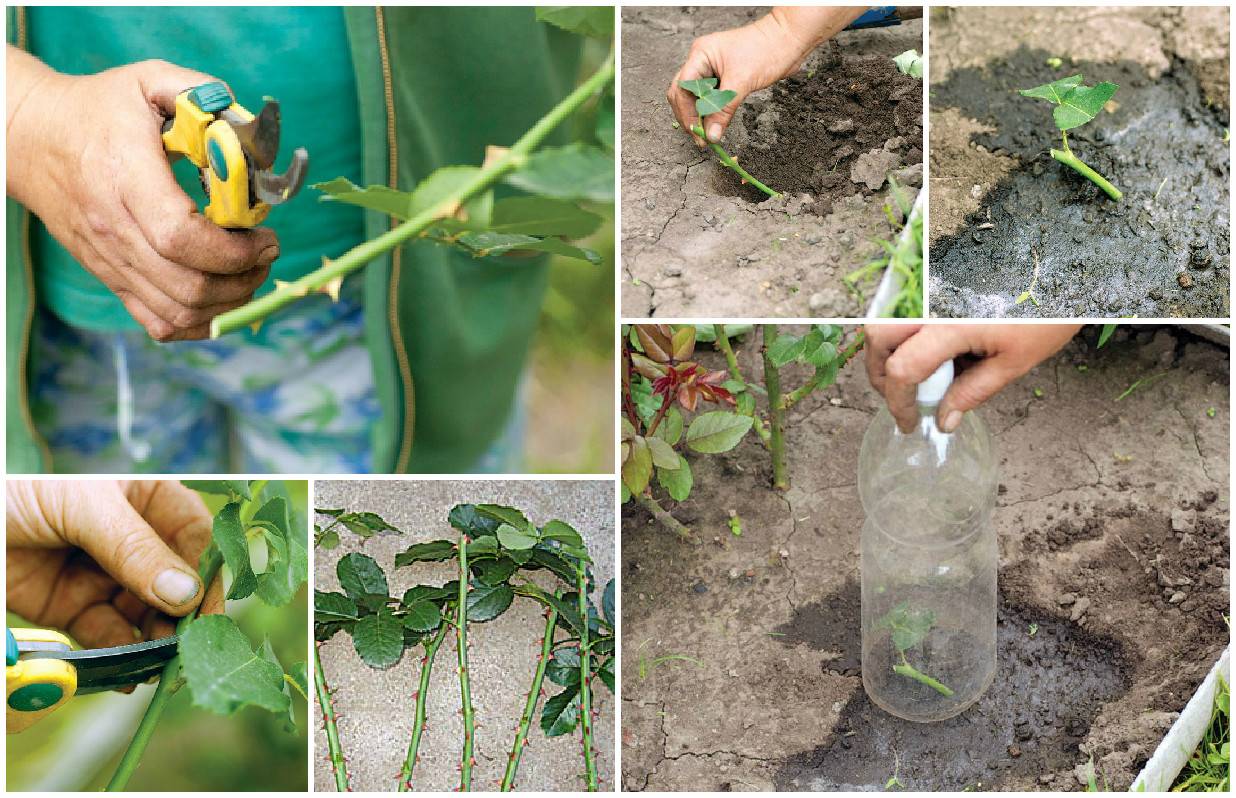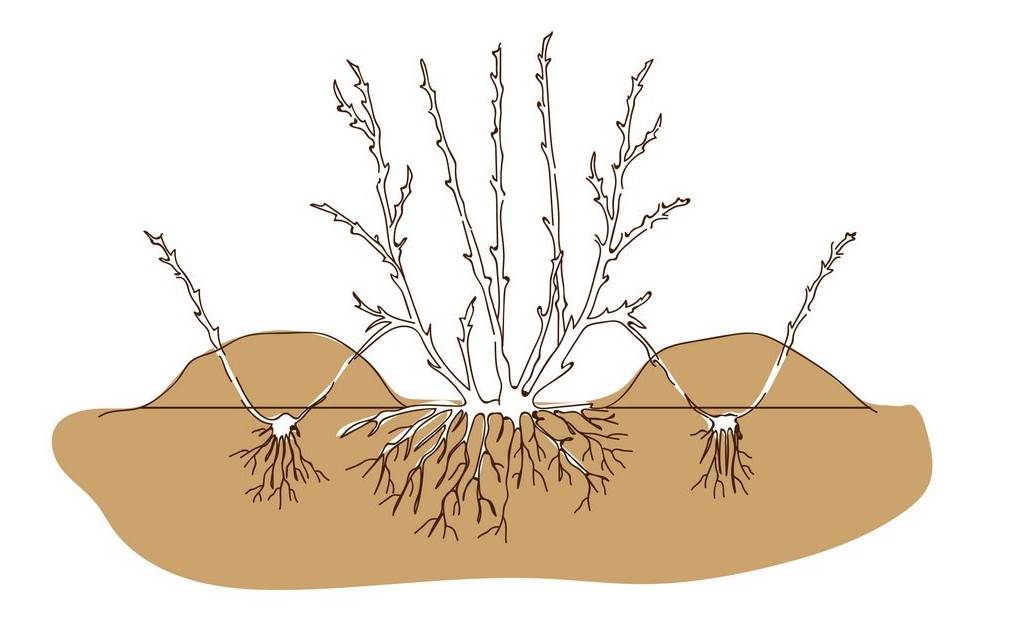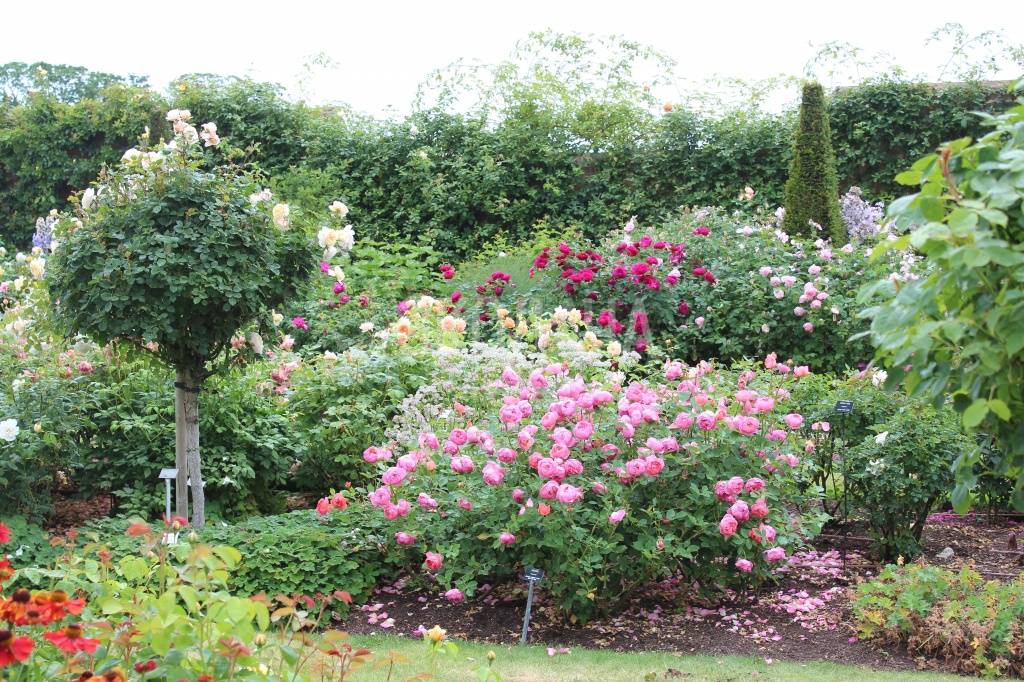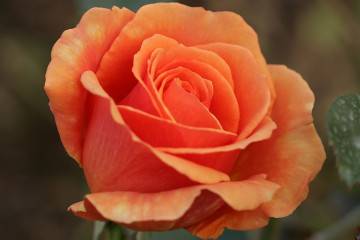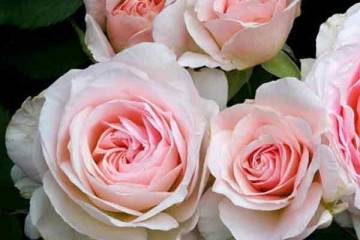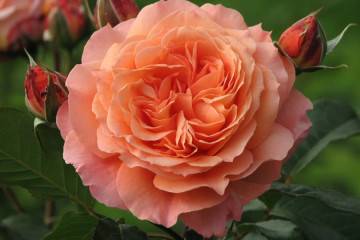Rose Boscobel (Boscobel) - description and characteristics of culture
Content:
Rose Boscobel (Austin Boscobel) - park rose of the new generation. She was received and included in the Encyclopedia of Roses recently, in 2012, by the English breeder David Austin. Compact bushes with large, multi-petal buds are in great demand by rose lovers. An amazing fruity aroma gives the flowers a special charm.
Rose Boscobel (Boscobel, Auscousin)
The English rose Boscousin is prized for its flowers. The culture has wonderful double buds. They have a regular spherical shape and consist of tight-fitting petals, of which there can be up to 80 pcs. It is impossible to say unequivocally about the color of the bud. It is somewhere between red and coral. When the bud is fully opened, the yellow core is exposed.
Like other spray roses, Boscobel has flowers collected in inflorescences. One bunch usually consists of 3-5 buds. The bush itself is vertically spreading. With a height of about 1.5 m, it occupies an area of no more than 1 square meter. Powerful, flexible shoots are studded with short thorns. The foliage is dense. The leaf plates are green, polished.
The variety achieves optimal development and flowering on a nutritious soil with low acidity. The depth of the groundwater must be sufficient so that the roots do not reach them. Rose loves the sun, but only in the morning and evening hours. She needs 4 hours of sunshine a day. The western part of the garden is perfect for a plant.
Culture care
Many consider the rose to be a capricious plant, but if you plant it correctly and take care of it, observing the requirements of agricultural technology, then there should be no difficulties with its cultivation.
Caring for a rose involves regular loosening and weeding of the soil. She does not tolerate the neighborhood with weeds. To avoid overgrowing, the root zone should be weeded regularly, covered with mulch.
Watering
The amount of water a bush needs depends on its age. For an adult bush, one bucket twice a week is enough. In rainy weather, watering is reduced, when it is hot, 3-4 waterings weekly are required. The water should be kept warm. It is best to use rainwater.
Top dressing
The hybrid needs regular feeding. After the first wave of flowering, nitrogen fertilizers are applied. Nitrogen is very good at helping to build up green mass. Further feeding is aimed at ensuring the decorative effect of the hybrid. Potassium and phosphorus are added to the second and subsequent dressings (every 2 weeks).
The last top dressing for the season is applied two weeks before the end of the growing season. Estimated date is mid-October. For the southern republics, an adjustment is made according to climatic conditions. It is aimed at increasing plant immunity and successful wintering.
To avoid mistakes, especially at the beginning of the cultivation of the variety, you can use a ready-made fertilizer for roses. For the number and frequency of use, there is a detailed description in the instructions.
Pruning
The Boscobel rose must be pruned three times during the growing season. The most ambitious is the spring one. It is carried out before the start of sap flow, removing all damaged, dried stems.Also, the rose does not need thin, weak shoots and branches growing inside the bush. If the former pull off food from strong stems, the latter thicken the crown. This leads to stagnation of air and, as a result, the development of diseases.
A corrective haircut is carried out all summer as needed. Formative (autumn) pruning is carried out 2-3 weeks before the onset of frost. With this pruning, young and old shoots are left approximately equally. The total number of branches should not exceed 7-8 pcs.
Winter care
Before the onset of winter, the bush needs to be insulated, but first you need to clear the bush itself and the soil around it from fallen leaves, weeds. Just in case, it will not hurt to treat the root zone with an insecticide, to loosen it up. Further, you can huddle this area high with coniferous needles. The branches remaining after the autumn pruning can be bent to the ground and wrapped in burlap (any covering material) or tied, covered with a hut. In both cases, you can get by with spruce branches.
Propagation of a rose
Like many rose hybrids, this rose is propagated by all classical methods, that is:
- seeds;
- cuttings;
- layering.
The most popular and frequently used ones are cuttings and layering. Propagated by seeds only if fresh, purchased ones are available. Seeds from your own bush are not suitable for sowing. Saplings will grow, but the rose will not retain parental qualities.
Cuttings can be obtained by pruning. Stronger cuttings are selected. The stalk should be about 20 cm long, with 3-5 buds. Before planting, the material is treated with a root formation stimulator ("Epin", "Kornevin") and planted in a nursery bed. In this case, the lower leaves are removed. Only the apical leaf remains. For better rooting, the seedlings are covered with a cap.
Another good way is to root the cuttings. A strong bottom shoot is selected and placed in a shallow groove in the soil. To prevent the branch from straightening, it must be pinned to the ground in several places. Roots remain intact under the bush until next spring.
Advantages and disadvantages of the variety
The advantages of Boscobel include:
- high decorativeness;
- long flowering;
- wonderful aroma;
- easy reproduction;
- winter hardiness;
- disease resistance;
- demand for landscape design.
The main disadvantage is the loss of decorativeness of the rose in the open sun, intolerance of moisture stagnation.
The English rose Boscobel is a very popular variety. It is very actively used to decorate gardens and parks. The shrub plant looks great in the lacy shade of evergreen trees and shrubs, it can act as a background for many flowers and plants. If you provide the rose with the right conditions, the results will delight for many decades.
